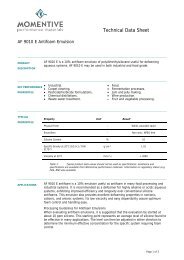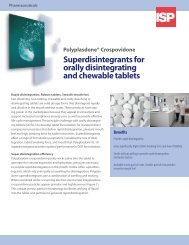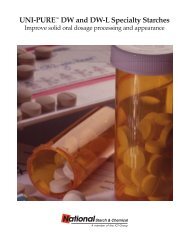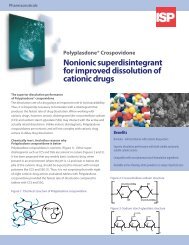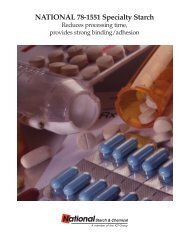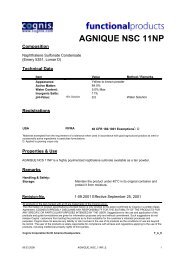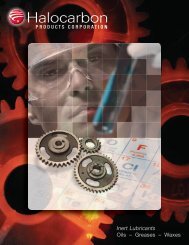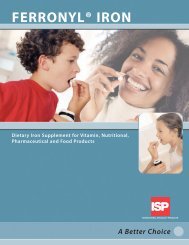Vegapure® Sterol Esters - Anshul Life Sciences
Vegapure® Sterol Esters - Anshul Life Sciences
Vegapure® Sterol Esters - Anshul Life Sciences
- No tags were found...
You also want an ePaper? Increase the reach of your titles
YUMPU automatically turns print PDFs into web optimized ePapers that Google loves.
Human Cholesterol Digestion and AbsorptionCholesterol is an essential component of cell membranes and a precursor to bile acids andsome hormones. Most of the body’s cholesterol is made by the liver, with additional amountsprovided by diet (Table 6). The fast turnover rate of intestinal cells supplies another source ofcholesterol from old cells that have been “sloughed off”. Thus, the amount of cholesterolavailable for absorption comes from the contribution of bile (about 1,000 mg per day), diet(200 - 500 mg per day from typical American diet) and intestinal cells (250 - 400 mg per day).Table 6Typical U.S. Adult Typical Contribution Typical Contribution fromDietary Intake from Liver (Bile) Intestinal Cell Turnover(mg / day) (mg / day) (mg / day)Cholesterol 200-500 600-1,000 250-400Figure 4 depicts what happens in the intestine as part of the digestion and absorption offat-soluble nutrients. Consumption of fat-soluble dietary components, such as cholesteroland triglycerides (the main component in fat), trigger a release of bile from the gallbladder(produced in the liver) into the intestine. Bile salts are needed to form "micelles", or emulsifiedlipid droplets. Because our bodies are made up mostly of water, fat-soluble dietary compoundsmust be "packaged" with an emulsifier to be delivered where needed. In this case,the micelles are needed to absorb cholesterol and other fat-soluble nutrients.Once absorbed into the intestinal cells, new packages called chylomicrons are secreted whichcarry cholesterol, other fats and proteins to the liver. The liver further processes these nutrientsand produces the very low-density lipoprotein (VLDL) particles, which contain mostlyfat and cholesterol, and small amounts of protein. Eventually, the VLDL becomes low densitylipoprotein (LDL), otherwise known as "bad cholesterol," because these are the primarycholesterol carriers to the circulatory system and other tissues in the body.Human Cholesterol Digestion and Absorptionin the Presence of <strong>Vegapure®</strong> <strong>Sterol</strong> <strong>Esters</strong>Figure 5 shows how cholesterol absorption is affected by the addition of <strong>Vegapure®</strong>vegetable sterol esters to the diet. <strong>Sterol</strong> esters deliver sterols to the small intestine as theester is cleaved, or broken apart. <strong>Sterol</strong>s compete with and displace cholesterol from themicelles. Under some circumstances, sterols may have greater affinity for the micelles thancholesterol. In this way, sterols interfere with cholesterol incorporation into the micelles,thus preventing some cholesterol from being absorbed and incorporated into chylomicrons.The liver processes the chylomicrons as previously described. The body has a mechanism toincrease endogenous cholesterol (cholesterol produced by the liver) production if it sensesthat less cholesterol is being absorbed. This increase in endogenous cholesterol productionis less than the cholesterol-lowering effect of sterols, resulting in a net cholesterol reduction.There are dozens of studies showing the cholesterol lowering effect of sterols. Many ofthese studies using Cognis’ sterol esters were used in the U.S. FDA’s determination thatsterols lower cholesterol. The wide variety of study designs and subjects leads to a rangein typical cholesterol reduction. Cognis’ review of the studies indicates that a cholesterolreduction of 10% can be reasonably achieved by the addition of sterol esters to the diet,consumed in two servings per day.5



